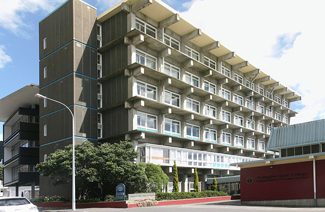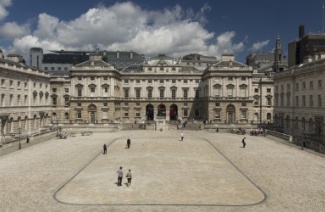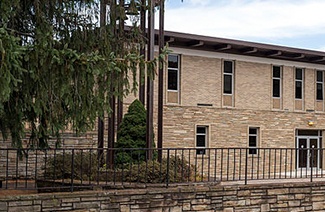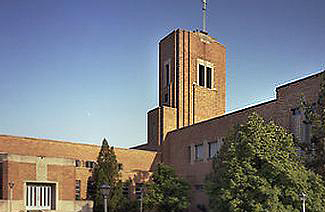A polygon is a two-dimensional figure with three or more straight sides. (So triangles are actually a type of polygon.) Polygons are named according to the number of sides they have. All polygons, no matter how many sides they possess, share certain characteristics: The sum of the interior angles of a polygon with nsides is (n – 2). For instance, the sum of the interior angles of an octagon is (8 – 2) = 6 = . The sum of the exterior angles of any polygon is . The perimeter of a polygon is the sum of the lengths of its sides. The perimeter of the hexagon below is 5 + 4 + 3 + 8 + 6 + 9 = 35. Regular Polygons The polygon whose perimeter you just calculated was an irregular polygon. But most of the polygons on the SAT are regular: Their sides are of equal length and their angles congruent. Neither of these conditions can exist without the other. If the sides are all equal, the angles will all be congruent, and vice versa. In the diagram below, you’ll see, from left to right, a regular pentagon, a regular octagon, and a square (also known as a regular quadrilateral): Quadrilaterals Good news: Most polygons on the SAT have just four sides. You won’t have to tangle with any dodecahedrons on the SAT you take. But this silver cloud actually has a dark lining: There arefive different types of quadrilaterals that pop up on the test. These five quadrilaterals are trapezoids, parallelograms, rectangles, rhombuses, and squares. Trapezoids A trapezoid may sound like a new Star Warscharacter. Certainly, it would be less annoying than Jar Jar Binks. But it’s actually the name of a quadrilateral with one pair of parallel sides and one pair of nonparallel sides. In this trapezoid, AB is parallel to CD (shown by the arrow marks), whereas AC and BD are not parallel. The formula for the area of a trapezoid is where s1 and s2 are the lengths of the parallel sides (also called the bases of the trapezoid), and h is the height. In a trapezoid, the height is the perpendicular distance from one base to the other. To find the area of a trapezoid on the SAT, you’ll often have to use your knowledge of triangles. Try to find the area of the trapezoid pictured below: The question tells you the length of the bases of this trapezoid, 6 and 10. But to find the area, you first need to find the height. To do that, split the trapezoid into a rectangle and a 45-45-90 triangle by drawing in the height. Once, you’ve drawn in the height, you can split the base that’s equal to 10 into two parts: The base of the rectangle is 6, and the leg of the triangle is 4. Since the triangle is 45-45-90, the two legs must be equal. This leg, though, is also the height of the trapezoid. So the height of the trapezoid is 4. Now you can plug the numbers into the formula: Parallelogram A parallelogram is a quadrilateral whose opposite sides are parallel. In a parallelogram, Opposite sides are equal in length: BC= AD and AB = DC Opposite angles are equal: and Adjacent angles are supplementary: The diagonals bisect (split) each other: BE = ED and AE = EC One diagonal splits a parallelogram into two congruent triangles: Two diagonals split a parallelogram into two pairs of congruent triangles: and The area of a parallelogram is given by the formula where b is the length of the base, and h is the height.
SAT数学常识讲解之多边形
2022-05-28 10:20:05
最新资讯
热门院校
-
 阿肯色中央大学
阿肯色中央大学University of Central Arkansas
-
 拉萨尔男校
拉萨尔男校La Salle College High School
-
 惠灵顿女子学校
惠灵顿女子学校Wellington Girls' College
-
 NararaValleyHighSchool
NararaValleyHighSchoolNarara Valley High School
-
 米勒莫特技术学院查塔努加分校
米勒莫特技术学院查塔努加分校Miller-Motte Technical College
-
 利物浦约翰摩尔斯大学
利物浦约翰摩尔斯大学Liverpool John Moores University
-
 克雷格学校
克雷格学校Cranleigh School
-
 库卡学院
库卡学院Keuka College
-
 托科阿福尔斯学院
托科阿福尔斯学院Toccoa Falls College
-
 菩及海湾大学
菩及海湾大学University of Puget Sound
-
 考陶尔德艺术学院
考陶尔德艺术学院Courtauld Institute of Art
-
 凯尼休斯学院
凯尼休斯学院Canisius College
-
 马里兰阿雷格尼学院
马里兰阿雷格尼学院Allegany College of Maryland
-
 西南基督教大学
西南基督教大学Southwestern Christian University
-
 钱瑟勒公立学院
钱瑟勒公立学院Chancellor State College
-
 富卡中学
富卡中学Fuqua School
-
 科罗拉多天泊莱学院
科罗拉多天泊莱学院Colorado Timberline Academy
-
 圣仕师国际学校(圣塞西尔国际学校)
圣仕师国际学校(圣塞西尔国际学校)Academic Ste. Cecile International School